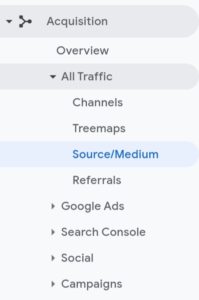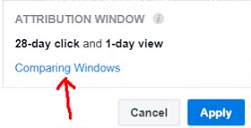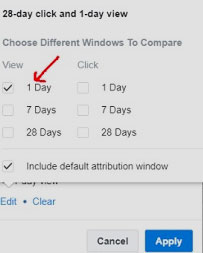Facebook advertising isn’t child’s play. It’s ridiculously expensive and can give you a minor heart attack if it fails to bring a reasonable Return on Investment (ROI). But running a Facebook campaign can be daunting if you don’t have much experience in digital marketing.
And that’s why I’ve prepared this guide to walk you through Facebook ads marketing and its relevant information, like how Facebook can deceive you, the importance of calculating ROI, ways to measure it, and much more.
How other metrics might mislead you?
Facebook offers tremendous help in creating a customer persona using basic demographic information of your target audience. However, considering the gigantic ocean of Facebook marketing, that’s just the tip of the iceberg. Before you even know it, Facebook misleads you with superficial metrics like click-through rate, likes, comments, shares, and tags. And if you only look at the surface, you’ll fail to understand the primary purpose of Facebook advertising campaigns – ROI.
Think about it. What’s the point of getting 500+ likes and 1500+ comments on a Facebook post if your ad spend doesn’t break even, let alone make a profit after an insanely high ad spend? Check out the following image. It shows engagement, but nowhere does it predict our brand’s ROI.
Insert a screenshot of any of YOUR Facebook ads here.
Now you see the point?
The fundamental aspect of any business is its bottom line. Everything else comes second and serves as a connector to help achieve a goal.
But here’s the catch. Facebook engagement isn’t completely useless. For example, if you’re targeting 50+ conservative men, you can create content by better understanding their interests, pains, and desires that directly speak to them.
In this case, smart marketers (like you) should know that older folks are skeptical about the internet, especially online shopping. So, it’s one thing to engage them on Facebook, but another to drive an action out of them to increase the ROAS – Return On Ad Spend (more on it later).
But why is ROI the most important metric for Facebook Ads?
To get a deeper understanding of your Facebook ads ROI, it’s imperative to think beyond the social impact to know how much revenue your business generates from old customers and newly acquired leads.
And rightfully so; as a marketer or a business owner, you should analyze your sales funnel and track Facebook ROI to know which ads are performing well. Then you can double down on them to carry out effective lead generation to boost your sales and conversion rates.
So if you don’t calculate the most important metric – Facebook ads ROI – you won’t possibly know if an ad is worth spending money on or if you need to cut back.
How to calculate Facebook Ads ROI?
Great question.
At first, it may look as simple as subtracting the Facebook ad spend from the total revenue generated, but it’s a little more complex than that because you have to consider numerous factors. There are many ways to measure ROI on Facebook ad spending. However, I find the following method the most convincing because:
- For one, you already have free access to Google Analytics and Facebook Ads Manager, even if you’re a beginner.
- Secondly, other methods require a paid subscription to supporting softwares.
Let’s learn the easiest way to calculate ROI on Facebook ads.
Step 1:
Log in to your Google Analytics account.
Step 2:
Navigate to the menu.

Step 3:
Navigate to Acquisitions > All Traffic > Source/Medium.
Step 4:
Change the range of source/medium to last month.

Step 5:
Filter out the Facebook and Instagram referrers using the keywords facebook/instagram in the advanced reporting filter.
Step 6:
Note down the last direct sales from Facebook (aka total revenue generated).
Step 7:
Go to Conversions > Multi-Channel Funnels > Assisted Conversions.

Step 8:
Read the options and select ‘Source.’

Step 9:
Filter the Instagram and Facebook URLs in the advanced reporting filter: Facebook/Instagram, and check the Assisted Conversion Value.
Assisted Conversion is your customer’s final action after they see an ad. They return to your Facebook page later and then visit your landing page to buy a product. Since Facebook assisted this sale, hence the name assisted conversion.
Step 10:
Now head over to your Facebook Ads Manager and set the date to last 30 days.
Step 11:
If you’ve more than one Facebook ad campaign running, see the total amount spent in the last 30 days on all Facebook campaigns.
Step 12:
Inside Facebook Ads Manager, select Columns > Customize Columns.

Step 13:
Click on Comparing Windows.

Step 14:
If you’re going all in Facebook marketing alone, mark the 28-day attribution window. On the contrary, if you undertake a comprehensive marketing strategy across different channels, then select the 1-day view window.

That’s because if you go for a 7-day or a 28-day window, Facebook will likely take credit for more conversions, and the stats will mislead. It is what it is, and you can’t do anything about it!
Step 15:
Check the Website Purchases Conversion.
Step 16:
Now calculate ROI from Facebook. You can do that using the following formula:

For instance, say you spend $20 per day on ads for four days to promote a $50 product.
Let’s assume 100 people click on your ad, 50 visit your website, and 20 like your product but don’t finish the checkout process. And only 10 of those 100 buy your product.
Revenue generated based on the $80 ad spend is $500. So, the calculation for ROI will go like this:
Net profit = $500 – $80 = $420
Net Spend = $80
$420 / $80 x 100 = 525
Bravo! You’ve got a 525% ROI. That’s huge!
So, in order to have successful Facebook ad campaigns, you should set an ROI goal that meets your financial expectations.
But there is a slight difference between ROI and ROAS (Return On Ad Spend) that you should know.

ROI is the revenue generated from a Facebook ad, which tells you if a campaign is profitable or not. On the other hand, ROAS (Return on Ad Spend) calculates gross revenue made from every penny spent on marketing. ROAS metrics focus on how effectively a campaign generates impressions, clicks, and revenue.
Another great tool that speaks volumes about the social impact of individual ads is Facebook Insights. But tracking Facebook’s ROI isn’t its strong suit. Google Analytics comes in handy to fill this gap and gives you an ROI figure.
Well, that solves the problem in a perfect world – not in the entrepreneurship world we live in.
Because Google Analytics provides you with data, but it doesn’t record anything off-website. Let’s take the example of an old audience again.
Now you know that the older generation doesn’t trust the internet. To make the matter worse, they aren’t tech-savvy either. So, a majority of them are afraid of being scammed online, especially when paying with their credit cards. Chances are, most of your new customers would land on your landing page through an ad, but they’d prefer to shop in person to avoid unpleasant circumstances.
In this case, will Google Analytics record your offline sales? Absolutely not.
But GA Connector will
GA Connector integrates your analytics into a CRM of your choice. This integration gives you a breakdown of your Facebook ad spend and a full-fledged report on your buyer persona, new opportunities created, opportunities won, offline sales, customer lifetime value, CRM revenue, and more.
Take a look at the screenshot below.

In short, GA Connector offers in-depth information on Facebook ad campaigns across different platforms. So if you’re on the same page as many other businesses that use GA Connector to meet their website conversion objective, follow these two steps that will roughly take 1-2 minutes.
- Sign up for the FREE trial of GA Connector.
- Choose a place to store your leads – it can be your CRM or an excel sheet.
And this is how you can take your Facebook advertising game to the next level.
Got a question? Feel free to send our team a message.



